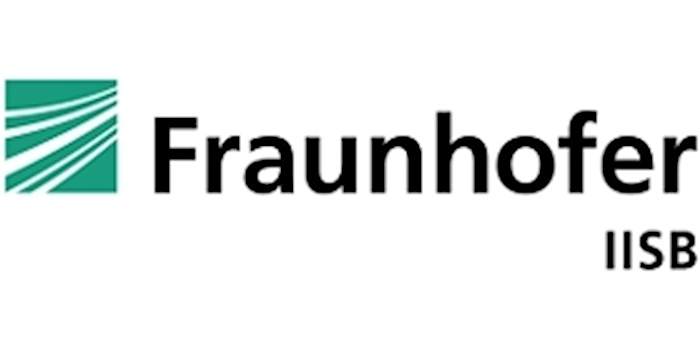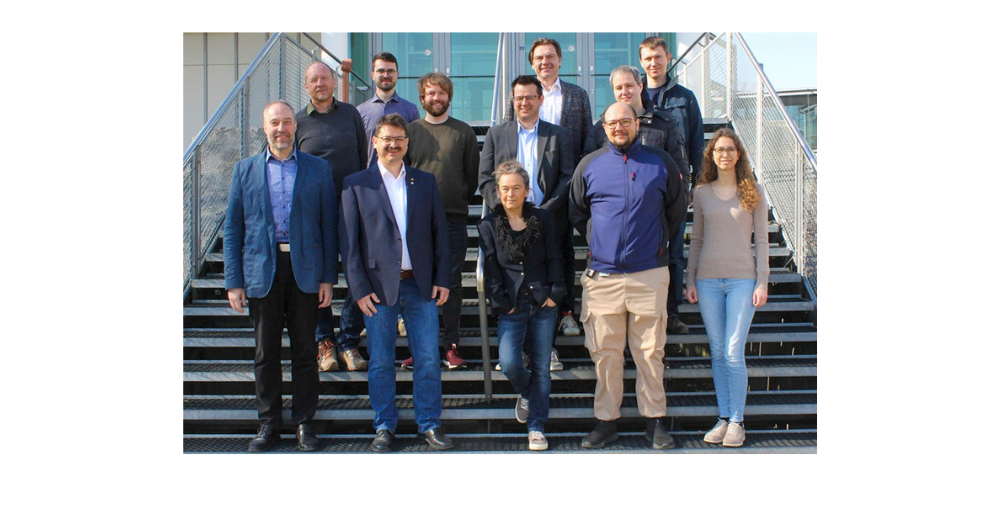
The eMobiGrid project partners are working together to increase the degree of utilization of renewable energies for the mobility sector. Because renewable energy sources are usually added as decentralized DC sources, their integration into the public AC grid causes many conversion steps. This results in unnecessary losses and makes the grid additionally susceptible to disruptions. Therefore, the partners in eMobiGrid rely on local DC grids, so-called DC grids. These enable low-loss coupling of battery storage systems, photovoltaic systems, wind turbines and hydrogen technologies and relieve the strain on power grids that are only weakly developed. The local DC grids are in turn coupled with the higher-level AC grid. This creates an overarching energy infrastructure that simultaneously supports the efficient integration of sustainable energy sources and facilitates the expansion of electromobility.
Such a local DC grid is already part of the energy management system at Fraunhofer IISB. It includes various modern energy sources and storage concepts, including a photovoltaic system, heat and cold storage, battery storage and a combined heat and power plant. The key component within the DC grid is efficient, reliable and safe DC converters. In the eMobiGrid project, the DC Grids group at IISB, led by Bernd Wunder, is now developing a particularly flexible, insulating DC/DC converter. This converter is specially optimized for bidirectional DC charging: “The new DC/DC converter is characterized by an enormously wide voltage range,” explains Bernd Wunder, “so it can charge and discharge not only passenger cars but also commercial vehicles from forklifts to trucks.” Only bidirectional charging makes it possible to use the batteries of electric vehicles as intermediate storage in the power grid. In this way, they buffer the overproduction of renewable energy. Bidirectional charging technology is therefore particularly important for grid stability when the energy supply fluctuates.
Bernd Zeilmann, managing director of the company Richter R&W Steuerungstechnik in Ahorntal and consortium leader of eMobiGrid, is particularly concerned about the practicality of all the solutions to be developed: “We will gear all our solutions to resources suitable for industrial use. In concrete terms, this means programmable logic controllers instead of desktop computers, real-time operating systems instead of Windows, smart meter gateways instead of insecure Internet communication.” In this context, a central aspect in eMobiGrid is the sole use of standardized and intelligent metering systems that comply with existing energy legislation. Prof. Dr.-Ing. Gerhard Fischerauer, who holds the chair for measurement and control technology at the University of Bayreuth, adds: “Commercial companies, private vehicle owners, and also public transport companies must be able to use this bidirectional charging infrastructure. This requires groundbreaking concepts. In the eMobiGrid project, we can now bring together many years of scientific and technical expertise.”
Project partners
The company Richter R&W Steuerungstechnik in Ahorntal / Upper Franconia is the consortium leader for the eMobiGrid project. Together with the company eCharge Hardy Barth in Birgland-Schwend / Upper Palatinate, it will work on the systemic tasks that arise in connection with a new grid interconnection facility to be designed. This facility will enable batteries used in a wide variety of vehicles to have access to the same stationary DC grid. The Fraunhofer Institute for Integrated Systems and Device Technology IISB in Erlangen is primarily concerned with the necessary power electronics and battery technology. The Chair of Measurement and Control Technology (MRT), a member of the Center for Energy Technology (ZET) at the University of Bayreuth, together with the company EnQS in Karlsruhe, is taking over the research and development work in the field of intelligent measurement and automation technology.
Funding.
eMobiGrid is one of six new collaborative projects funded by the German Federal Ministry of Digital Affairs and Transport (BMDV) to expand electromobility. In total, these projects are being funded with around ten million euros, eMobiGrid of which is being funded with around three million euros. These funds come from the BMDV’s Electromobility Funding Guideline, which is coordinated by the Berlin-based National Organization for Hydrogen and Fuel Cell Technology (NOW GmbH) and implemented by Project Management Jülich (PTJ).
Fraunhofer IISB
The Fraunhofer Institute for Integrated Systems and Device Technology IISB is one of Europe’s leading research institutions for wide bandgap semiconductors and power electronic systems. It serves the complete value chain of power electronics. The spectrum ranges from basic materials to semiconductor devices and process technologies, power electronic modules and components to complete electronic and power systems.
Central fields of application are electromobility, aerospace and sustainable energy supply. With its solutions, the institute repeatedly sets benchmarks in energy efficiency and performance, even for extreme operating conditions. The integration of intelligent data-based functionalities continuously opens up new application scenarios.
The IISB supports customers and partners worldwide in transferring current research results into competitive products. The institute organizes its activities in the two business units Semiconductor Technology and Power Electronic Systems. A total of approximately 300 employees work at the headquarters in Erlangen and at the Fraunhofer Technology Center High Performance Materials THM in Freiberg.
Further links.
www.iisb.fraunhofer.de



